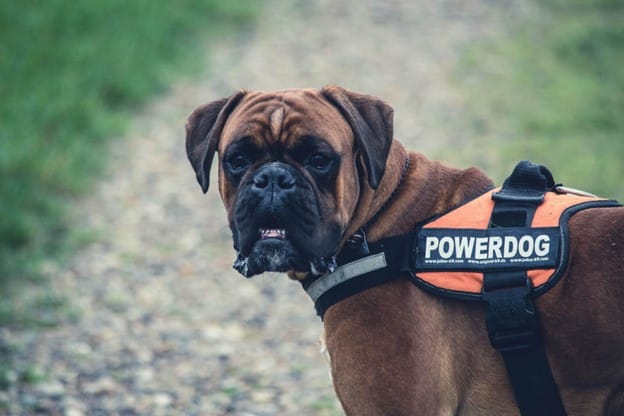
According to the Americans With Disabilities Act, the term “service animal” refers to individually trained dogs that work and perform tasks for persons with physical or mental disabilities. Specialized training sets them apart from emotional support animals; they aren’t considered pets but workers. In addition, service dogs require a thriving, healthy environment to perform their duties effectively. Here’s some more helpful information on the benefits of owning a service dog, courtesy of BarkleyAndPaws.
How Is a Service Dog Beneficial?
Service dogs can perform hundreds of tasks to assist disabled people, such as retrieving items, helping with mobility, guiding the blind and deaf, or alerting their owner to oncoming seizures or diabetic incidents. Service dogs encourage socialization, which can facilitate friendships, and promote communication as they listen without giving feedback or criticism. Touching a service dog can be comforting and help ease anxiety, bringing physiological benefits.
Choosing the Right Breed
There are several breeds suited to the job of a service dog. Labrador retrievers, golden retrievers, and German shepherds are perhaps the most well-known service dog breeds for the blind. If you have allergies, poodles can be trainable for mobility and many service duties, and miniature poodles are helpful in less physical roles.
Bernese mountain dogs and Great Danes are useful for mobility assistance. Often, schools train collies to detect seizures and help people living with PTSD and other psychiatric conditions. Pomeranians are suitable for people with diabetes, asthma, Parkinson’s disease, and hearing impairments.
Adjusting and Bonding With Your Service Dog
Adjusting and bonding with your new service dog should involve training, practice, and social interactions. All these activities will strengthen the communication and bond between you and your service dog. One practice you can use for bonding is tethering, where you use a three-to-six-foot leash with clips attached to the dog and yourself or a piece of furniture, such as a desk leg. Your dog should go everywhere you go; this technique allows you and your dog to learn how to communicate and navigate around each other. Additional equipment such as leashes and head halters, boots, and ID cards are part of the supplies required for your dog.
Reducing Stress
In the beginning, your dog may need time to adjust to their new home. Look for signs of stress like frequent scratching and irregular eating and drinking habits. To alleviate your pup’s stress, reduce your working hours, stick to an established routine, take more walks, and provide them with a safe space to rest.
Keeping Your Service Dog Safe Outside
It’s crucial to keep your yard safe for your service dog. An ideal yard has a fenced area that allows your dog to run and play safely and a shady spot that shelters them from the weather. If you need to install a fence, the costs will depend on the size of the site and the materials used. Do an online search for a fence company and evaluate their qualifications by looking at their licenses, insurance, and reviews before requesting an estimate. Before your installer begins work, make sure they’re aware of any underground utility lines in the yard.
Service Dogs for Mobility
Service dogs benefit disabled people in many ways, and there are many breeds to choose from to find a good match. Bonding with your dog, getting insured, reducing stress, and providing a safe fenced-in space will help form a successful relationship.
BarkleyAndPaws is here to enrich the lives of our members – and their pets! Let us know if you have any questions.




